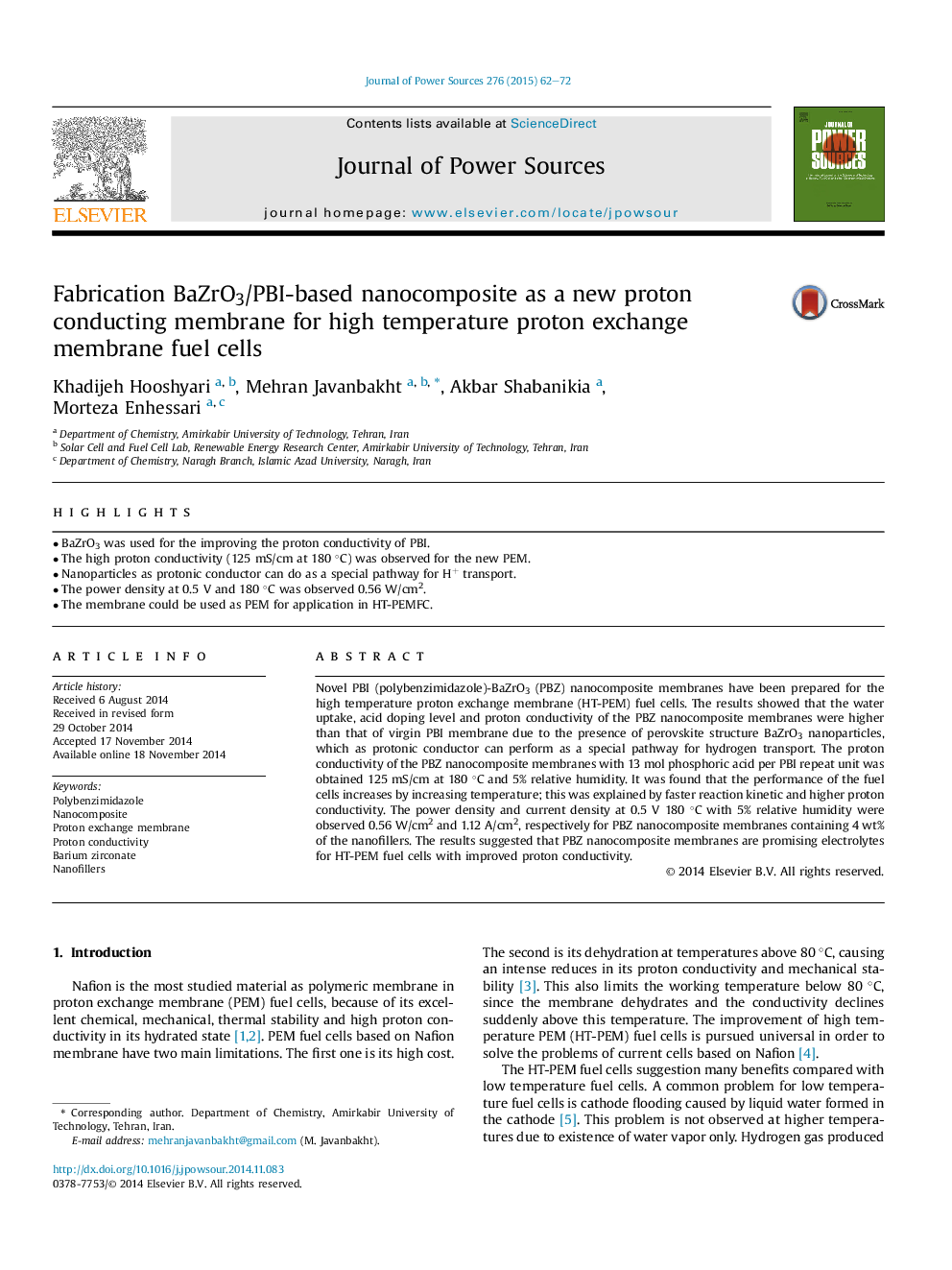| Article ID | Journal | Published Year | Pages | File Type |
|---|---|---|---|---|
| 1292901 | Journal of Power Sources | 2015 | 11 Pages |
•BaZrO3 was used for the improving the proton conductivity of PBI.•The high proton conductivity (125 mS/cm at 180 °C) was observed for the new PEM.•Nanoparticles as protonic conductor can do as a special pathway for H+ transport.•The power density at 0.5 V and 180 °C was observed 0.56 W/cm2.•The membrane could be used as PEM for application in HT-PEMFC.
Novel PBI (polybenzimidazole)-BaZrO3 (PBZ) nanocomposite membranes have been prepared for the high temperature proton exchange membrane (HT-PEM) fuel cells. The results showed that the water uptake, acid doping level and proton conductivity of the PBZ nanocomposite membranes were higher than that of virgin PBI membrane due to the presence of perovskite structure BaZrO3 nanoparticles, which as protonic conductor can perform as a special pathway for hydrogen transport. The proton conductivity of the PBZ nanocomposite membranes with 13 mol phosphoric acid per PBI repeat unit was obtained 125 mS/cm at 180 °C and 5% relative humidity. It was found that the performance of the fuel cells increases by increasing temperature; this was explained by faster reaction kinetic and higher proton conductivity. The power density and current density at 0.5 V 180 °C with 5% relative humidity were observed 0.56 W/cm2 and 1.12 A/cm2, respectively for PBZ nanocomposite membranes containing 4 wt% of the nanofillers. The results suggested that PBZ nanocomposite membranes are promising electrolytes for HT-PEM fuel cells with improved proton conductivity.
